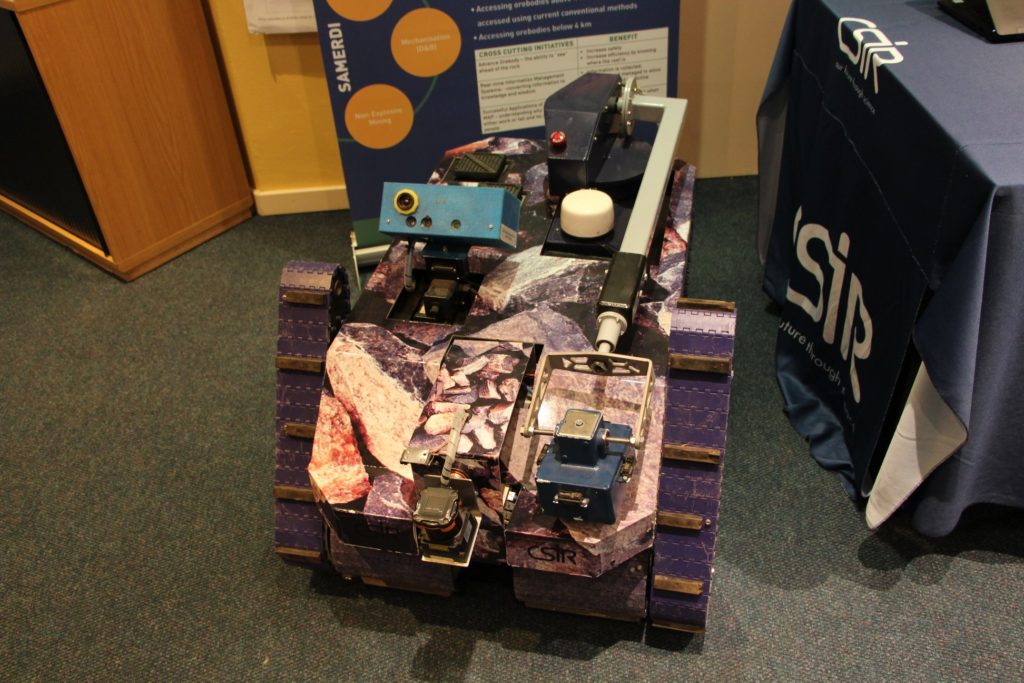South Africa’s Council for Scientific and Industrial Research (CSIR) is trying to improve safety in the country’s underground mining sector through the launch of a number of new technologies.
At an event held at the Mandela Mining Precinct, Johannesburg, earlier this week, CSIR showcased a robot able to assess and identify risks in underground mines, a ground penetration radar (GPR) solution, a personnel detection system and an early-warning and monitoring system called RockPulse.
Various stakeholders, including the Minerals Council South Africa, Department of Science and Technology, Department of Mineral Resources and representatives from industry attended the event.
CSIR is a primary research provider to South Africa’s Mine Health and Safety Council (MHSC) Centre of Excellence and has been looking into cutting-edge technologies to improve the wellbeing of miners underground.
The robot “platform” CSIR showed off is equipped with safety inspection sensors to enter mines during particularly dangerous periods. “Known as ‘Monster’ (pictured), the robot aims to assess and identify risks for underground mines,” CSIR said.
GPR, being researched as one of the South African Mining Extraction, Research, Development and Innovation (SAMERDI) Advanced Orebody Knowledge technologies, was also displayed. This technology contributes to the industry’s ‘zero harm’ objective by enabling miners to visualise potentially hazardous geological structures in the hanging wall that could lead to fall-of-ground incidents, CSIR said.
The personnel detection system uses a range sensors to determine the distance between each identified person, while tracking individuals to determine if and when a collision might occur.
RockPulse, meanwhile, will assist mines with measuring raw micro-seismicity, “extracting micro-fracture features and analysing the resulting series of features to detect large instabilities taking place in the rock mass in time”, CSIR said. This effectively provides an early warning system that mines can use to assess risks.
CSIR principal engineer Dr Shaniel Davrajh said: “The CSIR has core skills and competence in all of the strategic research areas of the MHSC from a safety perspective. The organisation has invested significantly in laboratories and continues to provide human resources for the provision of services to the sector.”
He said the body has offerings in support of occupational health and safety (OHS) in mining with infrastructure, such as mechanical testing, steel wire rope testing facilities, water laboratories and a self-contained self-rescuer testing facility.
Singh added that robotic technologies, such as Monster, were gaining traction in the underground mining industry by carrying out tasks and accessing areas deemed unsafe for mine personnel.
Principal geophysicist Dr Michael van Schoor said there was a similar need for the use of GPR technology in rock mass stability investigations.
“Managing health and safety risk in a mine requires real-time monitoring and quantification of the underground hazards and the exposure of personnel and equipment to such hazards,” he said.











